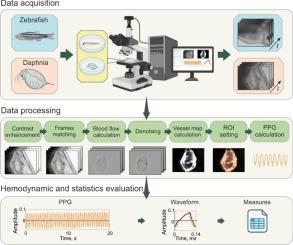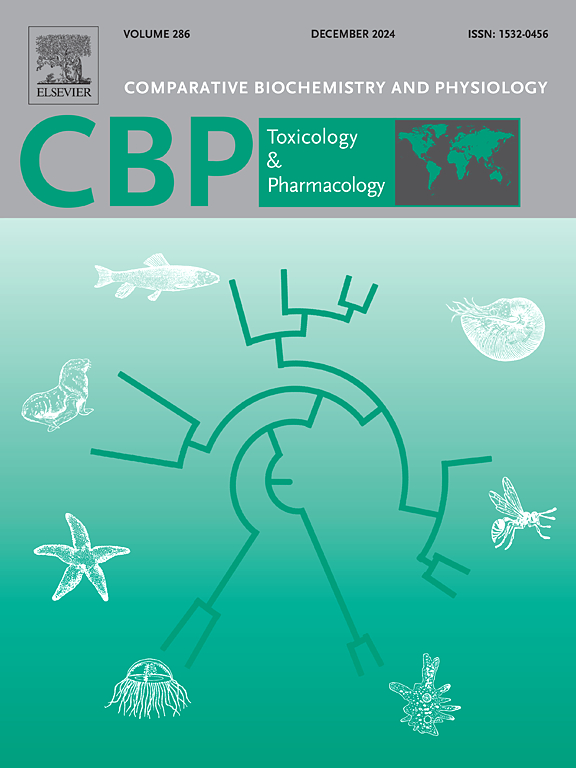Non-invasive recording of heartbeats in Danio rerio and Daphnia magna to assess the toxicity of imidacloprid and glyphosate
IF 3.9
3区 环境科学与生态学
Q2 BIOCHEMISTRY & MOLECULAR BIOLOGY
Comparative Biochemistry and Physiology C-toxicology & Pharmacology
Pub Date : 2024-11-17
DOI:10.1016/j.cbpc.2024.110075
引用次数: 0
Abstract
Non-invasive optical registration and subsequent analysis of heart rate (HR) and heart rate variability (HRV) in transparent aquatic animals have recently been proposed as convenient toxicological endpoints, well-suited for automation data acquisition and processing. This approach was evaluated in experiments involving juvenile Daphnia magna and zebrafish (Danio rerio) embryos exposed to glyphosate solutions (20 mg/L, 2 mg/L, 0.2 mg/L, and 0.02 mg/L) and imidacloprid solutions (30 mg/L, 3 mg/L, 0.3 mg/L, and 0.03 mg/L). The findings indicate that cardiac performance assessment is a promising approach for short-term toxicity evaluation. However, the sensitivity of this physiological endpoint to various external factors may limit its broader application. Results from the two model species highlight their differing sensitivities to the tested substances, emphasizing the need for thorough preliminary studies before establishing this method as a standardized toxicological tool. The potential development and improvement of techniques for assessing heart rate in zebrafish and daphnids are discussed.

无创记录丹利欧和大型蚤的心跳,以评估吡虫啉和草甘膦的毒性。
最近,有人提出对透明水生动物的心率(HR)和心率变异性(HRV)进行非侵入式光学登记和后续分析,作为方便的毒理学终点,非常适合自动化数据采集和处理。这种方法在实验中进行了评估,实验对象是暴露于草甘膦溶液(20 毫克/升、2 毫克/升、0.2 毫克/升和 0.02 毫克/升)和吡虫啉溶液(30 毫克/升、3 毫克/升、0.3 毫克/升和 0.03 毫克/升)的大型水蚤幼体和斑马鱼(Danio rerio)胚胎。研究结果表明,心脏性能评估是一种很有前景的短期毒性评估方法。然而,这一生理终点对各种外部因素的敏感性可能会限制其更广泛的应用。两种模式物种的研究结果突显了它们对受试物质的不同敏感性,强调在将这种方法确立为标准化毒理学工具之前,需要进行彻底的初步研究。本文讨论了开发和改进斑马鱼和水蚤心率评估技术的可能性。
本文章由计算机程序翻译,如有差异,请以英文原文为准。
求助全文
约1分钟内获得全文
求助全文
来源期刊
CiteScore
7.50
自引率
5.10%
发文量
206
审稿时长
30 days
期刊介绍:
Part C: Toxicology and Pharmacology. This journal is concerned with chemical and drug action at different levels of organization, biotransformation of xenobiotics, mechanisms of toxicity, including reactive oxygen species and carcinogenesis, endocrine disruptors, natural products chemistry, and signal transduction with a molecular approach to these fields.

 求助内容:
求助内容: 应助结果提醒方式:
应助结果提醒方式:


